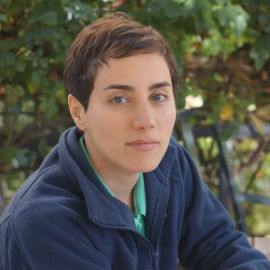First woman who received Fields medal.
Many people regard the Fields medal to be an equivalent to the Nobel Prize. For very many years ever since its inception, this award had not gotten received by a woman until Maryam bagged it in 2014. Being the first woman to get such an honor was a great achievement for her, and she got applauded by people across the globe. It got seen as a significant milestone, both for her and women all over the world. Maryam, born and raised in Iran, was a Math professor who taught at the Stanford University.
Maryam dedicated her active days in the field to the research of symplectic geometry and ergodic theories. It is her great strides in these issues that accorded her the honor of a medal in such a competitive field.
Not only was Maryam the first woman to receive this award but she was also the first Iranian to get it. The committee based their decision on her hard work in the fields of moduli spaces as well as Riemann surfaces.

Maryam was born in 1977 on the third of May. She grew up in the capital city of Iran, Tehran. During her childhood years, she spent a lot of time with her father who worked as an electrical engineer. With time, she picked up a lot of knowledge in the science field. On seeing her excellent capabilities in the science field, her father enrolled her in the Tehran Farzanegan School. It was an institution which strived to develop the talents of children whose skills were impeccable.
In 1994, she took part in the IMO and walked away with the gold medal for being the best mathematician in the competition. She made history by becoming the first Iranian to get a perfect score in the contest. Walking away with two gold medals, she made her mark as being one of the best brains in the field.
Her prowess in the field did not end at the IMO, and she went ahead to pursue an undergraduate degree in Math at the Sharif University of Technology. That was back in 1999. Once she finished her education, she headed to the United States to get a graduate degree and received a doctorate from Harvard in 2004. She stayed on at Harvard, working under the supervision of Curtis McMullen.
Maryam’s determination earned her a lot of respect from both the students and her colleagues.
Once she got her doctorate, she started working as a professor at Princeton in 2004. Maryam worked there for four years before moving on to teach at Stanford. She made various discoveries during her work which earned her a lot of recognition.
Maryam got diagnosed with breast cancer in 2013, a condition which worsened over time, leading to her death in 2017 at the age of forty. Her contributions to the field of Math get remembered and widely applied to date.